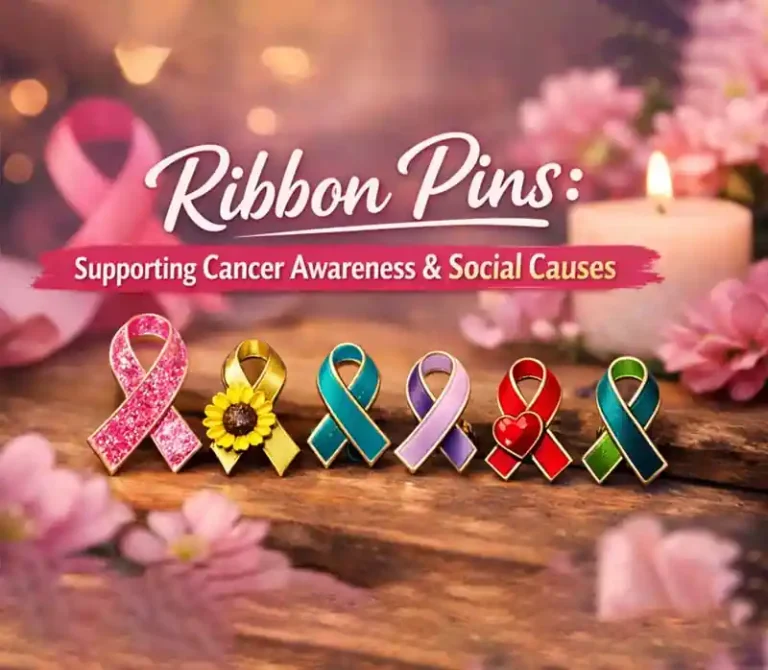
Ribbon Pin: Supporting Cancer Awareness and Social Causes
Table of Contents This guide is for anyone interested in using ribbon pins to support causes, from individuals to organizations.
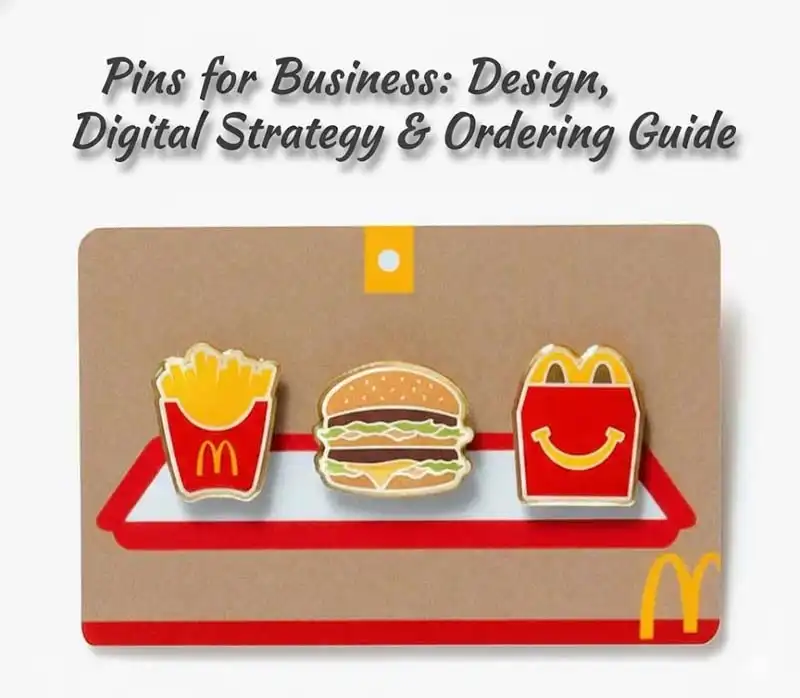
Promotional pins are an easy, incredibly impactful way for brands and organizations to engage with their audience.
These tiny treasures are a big opportunity for marketers, providing a one-of-a-kind mix of exposure, intimacy and affordability. They are universal, timeless and cross-contextually functional.
When customers sport promotional pins, they’re walking billboards.
A clever pin with a logo or message really draws attention, igniting curiosity and getting people talking. Different from a digital ad that disappears in a few seconds, pins remain for years when pinned to bags, jackets or lanyards.
Research indicates that promotional products, including pins, are remembered by 90% of recipients, more than online or print ads.
Because they’re portable, they’ll go anywhere the wearer goes, which means the brand will be seen by new people all the time, without the continual expenses of conventional advertising.
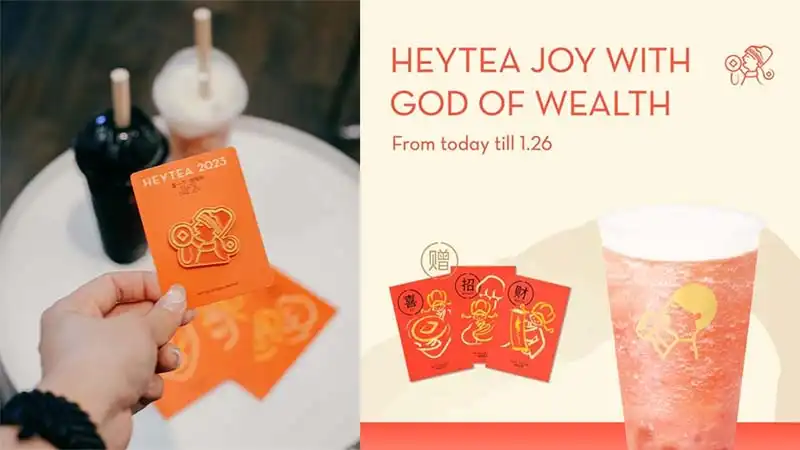
Promotional pins are more than just practical tools.
They’re emotional tools that make people feel connected.
A pin that is designed to celebrate a cause, commemorate an event, or simply reflect shared values creates a deeper connection with its audience.
For instance, a limited-edition enamel pin commemorating an anniversary or special campaign can make recipients feel appreciated and part of the tribe.
When these designs are not only beautiful but significant, they strike a personal chord and inspire recipients to value and don them frequently.
This emotional engagement builds brand loyalty and turns casual customers into fanatic supporters.

Aspect | Promotional Pins | Traditional Ads |
|---|---|---|
Cost-effectiveness | Low, one-time cost | High, recurring expenses |
Lifespan | 5+ years | Short-term (days to months) |
Customer engagement | Personal and emotional connection | Impersonal, broad reach |
Portability | Highly portable, wearable | Location-dependent |
They can be used as thank-yous or loyalty program rewards, assisting brands in cultivating deeper connections with their audience.
Free with purchase, a referral incentive or a long-term supporter award, these pins say thank you and acknowledgement.
They’re incredibly good at creating a sense of community. Lots of customers love to wear pins that symbolize their connection to a brand or cause.
Companies can use pins for internal reasons, like employee recognition, which builds brand culture and loyalty.
About custom company pins.
They are a fusion of visual interest and practicality in a small, stunning package.
Designing them should not be a purely aesthetic or purely practical exercise.
The design of your pin should be consistent with your brand. This involves choosing shapes, colors, and logos that make your brand instantly identifiable.
For instance, a tech company may prefer streamlined, geometric designs with a muted color scheme to express innovation, whereas a creative agency might select daring, bright pins to demonstrate their artistic style.
Remember, pins are tiny — generally only 1 to 2 inches — so keep it simple. If you overcrowd the design with too many intricate details or too many colors, the entire pin will appear cluttered and lose its punch.
A plain logo pin is usually a great option, as it doesn’t necessitate any input from a designer, but it stays on-brand.
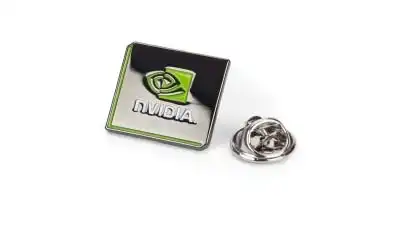
The material for your company pins can really determine their appearance and texture. Options include:
Enamel (Soft or Hard): Durable and vibrant, ideal for detailed designs.
Metal Alloys: Affordable yet sturdy, suitable for mass production.
Gold or Silver: Adds a touch of prestige and luxury.
Plastic: Lightweight and cost-effective, perfect for casual events.
Acrylic or Resin: Offers a glossy finish and modern appeal.
Precious metals like gold or silver are particularly sought after for premium branding, as they are synonymous with status and luxury.
Selecting the appropriate material is contingent upon the pins’ objectives and your financial plan.
To attract attention creatively, pair your logo with your color scheme, tagline, or other branding to make a visually appealing piece.
For example, using a whimsical image or an unusual form will add memorability to the pin. Pins are so visible when worn.
The opportunity exists for a single pin to be viewed by hundreds of people, a powerful promotion indeed.

Collaborating with talented designers can make your pins stand out.
Professional input makes sure that the design is clean, balanced, and optimized for small-scale production.
Designers can steer you in the right direction from a technical standpoint, such as color restrictions and what materials work with what.
You definitely want to plan ahead because production can take 4 to 6 weeks.
Order a few extra pins just to be on the safe side!
About: mixing pins into marketing Their allure is in their potential to form personal connections, strengthen loyalty, and make lasting impressions.
By cleverly weaving pins into marketing, businesses can increase visibility and engagement.
Trade shows, conferences, and community events are an awesome place to give away some pins.
Everyone loves a good swag item, and pins are a perfect way to make your mark at an event.
A well-crafted pin can be a conversation starter, prompting attendees to discover a brand.
For instance, you’re a tech startup handing out pins adorned with your minimalist logo.
Attendees recall your booth well beyond the conference hall. We’ve always used pins to represent an organization or cause, even all the way back to WWI.
This context creates a layer of depth, turning pins from pure swag into tangible representations of affiliation.
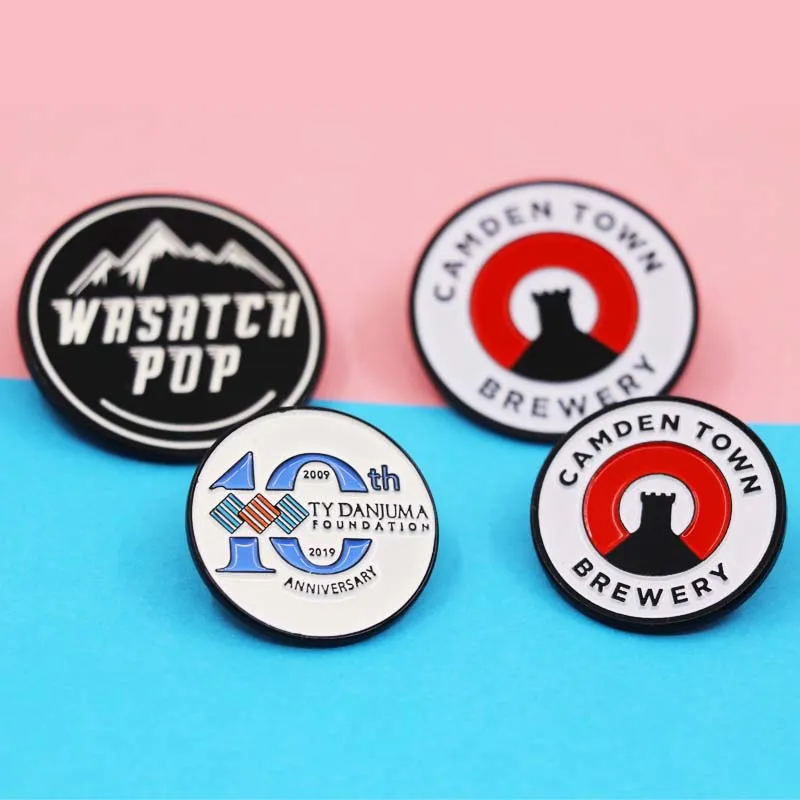
Incorporating pins into product packaging creates a surprise value added for consumers.
Think about unboxing something to discover a premium lapel pin with a brand’s logo. Just this little touch can make the unboxing experience magical.
For organizations, it solidifies branding and incentivizes recipients to wear and share the pin out in the wild.
Simple pins work best here, with the pin matching the rest of the look of the product and packaging.
This is especially useful for brands pursuing niche markets or a premium image.
Partner with influencers or brand ambassadors on social media to extend the reach of your promotional pins.
Influencers could wear pins as fashion statements, integrating them naturally into their posts.
For example, a fashion blogger might incorporate a pin into his or her attire, generating intrigue with his or her audience.
Partnered posts can put the pin’s design and significance front and center, allowing brands to reach an emotional chord with readers.
Pin designs should be on-brand as well for consistency across marketing efforts.
Define program goals: Identify whether the pins will reward purchases, referrals, or participation.
Design pins with purpose: Keep designs minimal and aligned with brand aesthetics.
Set clear criteria: Outline how customers can earn pins and foster transparency.
Promote the program: Use email, social media, and in-store displays to spread awareness.
Engage customers post-reward: Encourage recipients to share photos of their pins online, creating organic buzz.
We handcraft our promotional pins with a careful process that guarantees the best possible products.
Everything from choosing the appropriate manufacturer to locking in production schedules is part of ensuring a product that fulfills design and marketing goals.
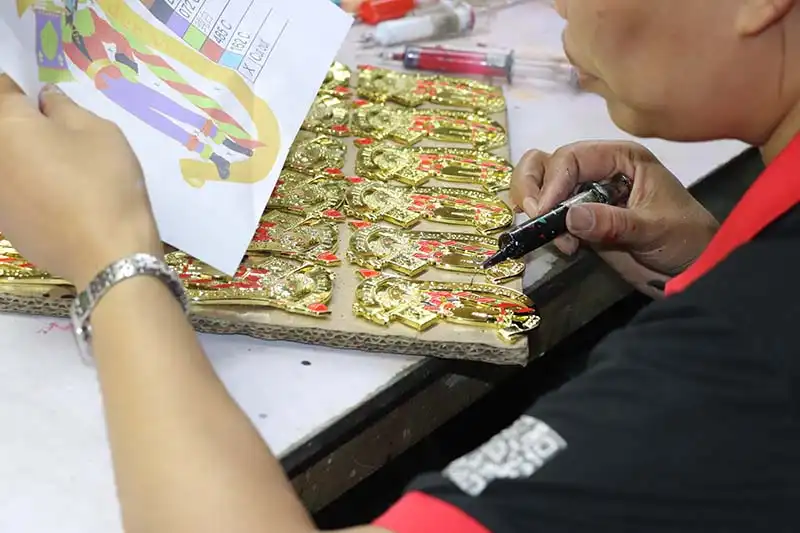
The key is selecting a manufacturer with experience in producing custom pins.
The production process is an old hand manufacturer who will lead you not only through the technical labyrinth but guarantee quality consistency.
Search for manufacturers who offer multiple pin types, such as enamel, die-cast, and soft enamel, and have a gallery of their work.
For example, one of his electroplating savvy manufacturers can give you options such as gold, silver, or antique copper finishes that can increase the allure of your pins.
Pin types affect cost and look a lot.
Enamel pins with their brilliant, glassy sheen are great for detailed artwork.
Die-cast pins provide a more textured, 3D effect that is perfect for logos or shapes with some depth.
For instance, if you’re on a tight budget and need color, soft enamel is probably the way to go.
Hard enamel gives a smooth, long-lasting finish but tends to cost more because of the extra polishing process.
Your decision here should be based on the brand and use of the pins for giveaways or exclusive merch.
Design and mold creation: The process begins with digital designs converted into molds. This lays the groundwork for everything that follows.
Casting and cleaning: Copper wire is shaped into custom designs, strung together, and dipped in syrup for reinforcement. Ultrasonic oil cleaning de-stains the pins in preparation for electroplating.
Electroplating and coloring: Plating involves dipping the pins in metallic finishes, such as gold or silver. For instance, red copper might be plated twice, while gold gets four. Colors come in next, usually in a plating-coloring-replating sequence.
Polishing: Each pin is hand-polished, including side polishing. This ensures every surface is smooth and free from imperfections.
Assembly: Thorn needles are attached using either glue or silver welding. Silver welding is preferred because that’s what lasts.
Quality control: Each pin is inspected to match the original design, ensuring accuracy and consistency.
Depending on the intricacies of a pin’s design and the stages in the manufacturing process, pin production timelines can range anywhere between hours and a few days.
Make sure to work with your manufacturer early and establish deadlines, especially if the pins are being used as part of a larger marketing campaign. For example, detailed enamel pins sometimes need extra time for electroplating and coloring.
This helps you avoid last minute delays, so your pins are ready when they need to be.
Promotional pins must be measured to ensure the campaign is having the desired effect.
By integrating both metrics and insights, companies are able to measure the concrete impact of how many units were sold and the more ethereal influence of brand recognition.
Tracking distribution is step one.
A simple spreadsheet or database can help you record how many pins were made, distributed, and to whom.
Work with your distributors, be they internal teams or external partners, to make sure you’re tracking progress properly.
Once you have distribution data, compare it against customer engagement to see if your pins are working.
For example, monitor website visits, social media engagement, or email subscriptions generated by the campaign.
A firm giving away 5,000 pins at a tradeshow may observe a 15 percent uptick in website traffic.
To further strengthen your insights, overlay these metrics with demographic information to see which segments of your audience were the most engaged by the campaign.
Key metrics and methods for measurement include:
Distribution volume: Total number of pins distributed.
Engagement rates: Click-through rates, social media likes or shares tied to the campaign.
Conversion rates: Percentage of engaged customers who completed desired actions like purchases.
Cost analysis: Measure distribution costs compared to the campaign’s overall budget.
Customer feedback provides insightful qualitative data.
Businesses can collect feedback via surveys, online reviews, or direct conversations to gauge the pins’ impact.
Questions could be related to pin design, value, or whether the pins generated brand interest.
For instance, a survey could indicate that consumers thought the pin’s design was memorable but that the branding was too understated.
Modifying future designs based on these insights can make you more connected to your customers.
After all, when it comes to promotional pins, success typically correlates to sales or lead generation.
Doing a simple pre- and post-campaign sales comparison is an easy method of determining financial impact.
For example, a company that experiences a 10 percent revenue increase after a pin giveaway is a good sign.
ROI is key here; basically, ROI is gains minus costs divided by costs.
More than revenue, monitoring new leads generated or repeat customer rates can expose general benefits.
Examining these results not only illuminates achievements but reveals insights for optimizing upcoming campaigns.

Table of Contents This guide is for anyone interested in using ribbon pins to support causes, from individuals to organizations.

Table of Contents Custom pins have become one of the most effective and stylish ways to express identity, promote brands,
No. 5, Tongan Road,
East District Xiaolan Town,
Zhongshan, Guangdong,
China
Copyright © 2024, Zhongshan Peakeen Gifts Supply Chain Co., Ltd. All rights reserved. Powered by PeaKeen Privacy Policy
Let’s work together to achieve business growth!
Let’s work together to achieve business growth!
10% Off